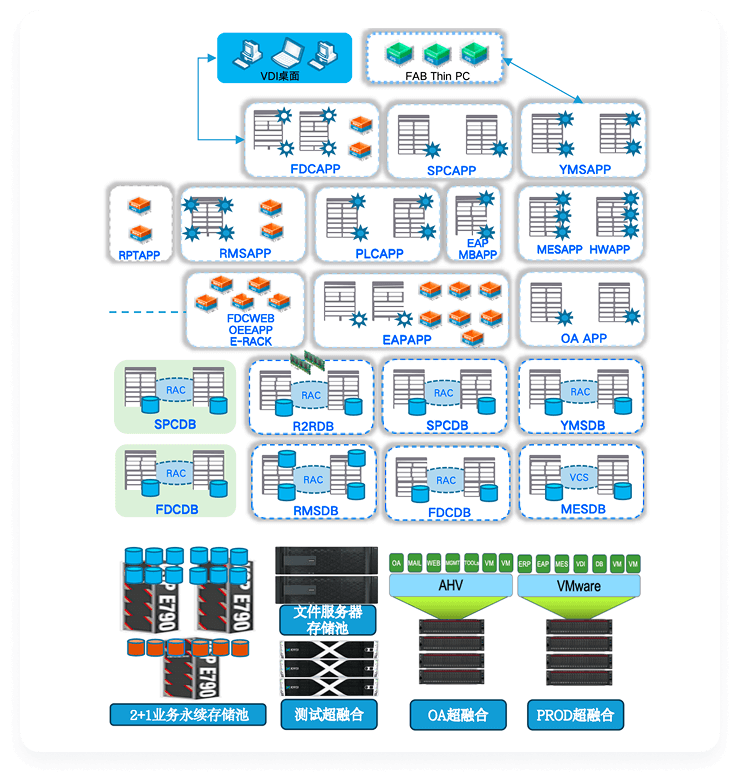Intelligent infrastructure construction for new semiconductor plants
IT Projects
- The company is building a new production plant and needs to design and deploy the new plant infrastructure;
- Reliability requirements: The infrastructure must ensure the continuous operation of critical systems to avoid production interruptions due to failures. Reference can be made to the verification solutions of existing factories.
- Scalability requirements: Design a modular architecture to meet business growth and flexible expansion in the next 3-5 years.
- High performance and high availability requirements: Meet real-time data processing needs, while ensuring that the system has no single point of failure through redundancy mechanisms and disaster recovery solutions.

- Customize system deployment according to application requirements and assist in achieving high availability, ensuring business continuity and failover capabilities;
- Deploy enterprise-class NAS storage for OA office and non-core data storage, providing efficient file sharing and permission management;
- The core database uses 2+1 active-active all-flash storage, supporting high-performance IOPS and low-latency access, ensuring stable operation of key businesses.
- Three hyper-converged clusters were built to support testing, office automation, and production applications. The hyper-converged architecture offers elastic scalability, simplifies operations and maintenance, and lays the foundation for future expansion.

Dozens of servers + 4 sets of storage + 3 hyper-convergence systems, ready for production in a short time.
The tiered storage architecture (NAS + all-flash storage) meets the needs of different scenarios while reducing storage costs and improving overall operational efficiency through efficient file sharing and data management.
Hyper-converged clusters support elastic expansion and can dynamically adjust resource allocation according to business needs. At the same time, they simplify IT operation and maintenance processes, reduce management complexity, and provide flexibility for future business growth.
High-availability deployment and active-active storage design ensure that there is no single point of failure for critical businesses, improve the system's fault tolerance and disaster recovery level, and further reduce the risk of business interruption.
